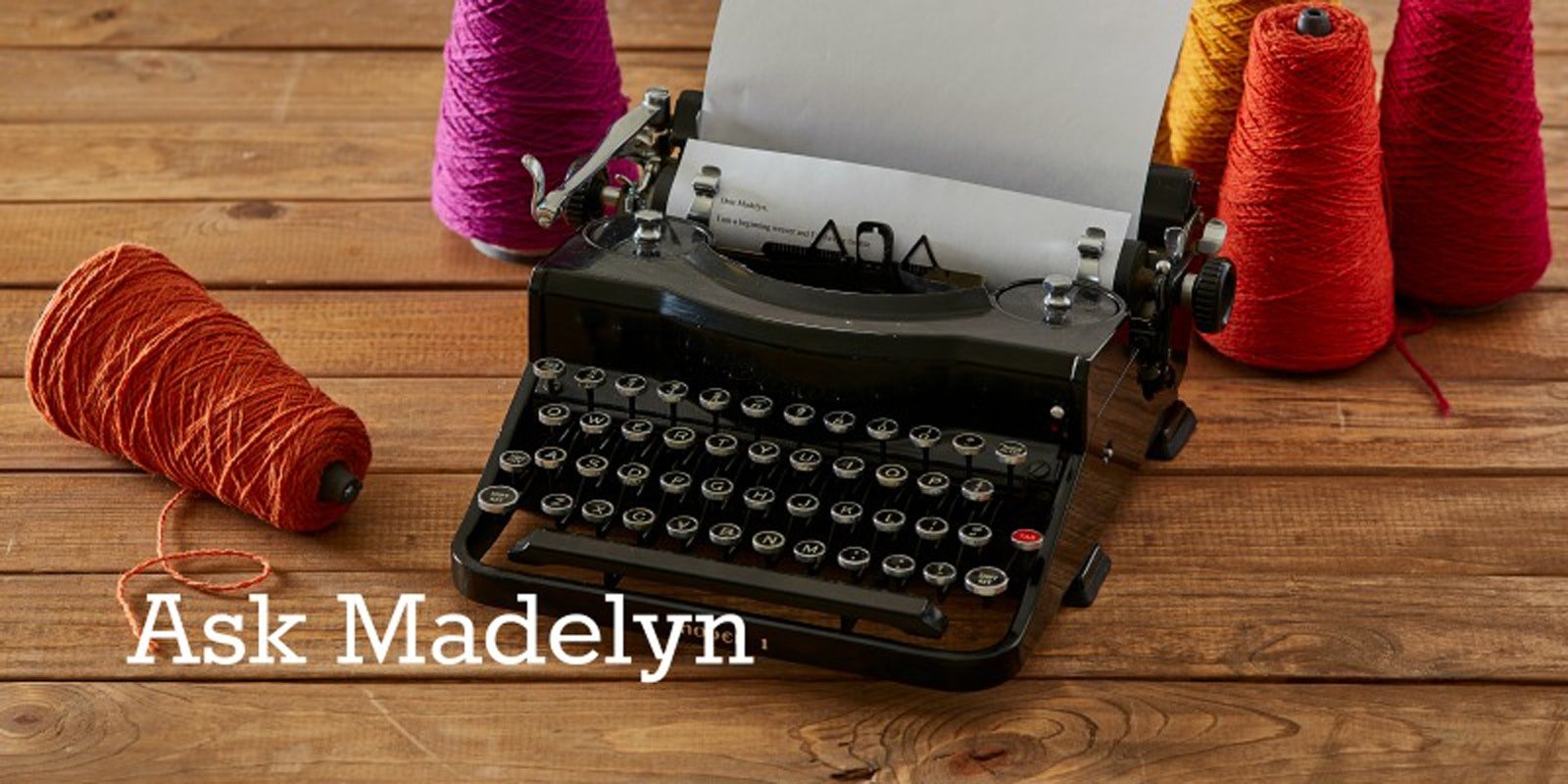Hi Madelyn!
I was taught that you are sort of “cheating” if you use floating selvedges. So, when I weave overshot (or other 2-shuttle weaves), I interlock the two wefts at the selvedges. For twills, I can usually figure out a treadle/shuttle order that takes the weft around the outside thread. Should I be using floating selvedges? I’ve never liked the necessity to weight them and advance the weight as you weave.
— Martha
Hi Martha!
To make floating selvedges truly easy to use so that they involve no thought (or advancing of weights) necessary, I always beam them with the rest of the warp. To weight them, I hang a 3” S-hook on them. I slide the S-hook over the back beam and down to where it rests under the warp beam. That way, I never see it or think about it again. Then, to weave, I follow the practice of always entering the shed by taking the shuttle over the floating selvedge and exiting under the floating selvedge on the other side. This is especially easy to do with jack looms because the floating selvedge is below the center of the open shed. You can therefore slide the shuttle into the shed over the floating selvedge without any fuss. As you catch the shuttle on the other side, you can slightly lift the floating selvedge so the shuttle glides out under it.
Depending on your threading, this could mean that the floating selvedge and the warp thread right next to it weave together and show as a doubled thread on the edge. Sometimes this has bothered me enough to change the in over/out under order to going in over, coming out over, going in under, coming out under or reversing over/under to under/over. The over/over/under/under order adds the necessity of remembering which one you just did, so I usually try not to decide to do that. Again, though, if you don’t find a need for floating selvedges, keep doing what you are doing!
– Madelyn
P.S. I think that any time-saving step that adds to your weaving pleasure (or the beauty of the cloth) is not “cheating,” but just using good sense.

